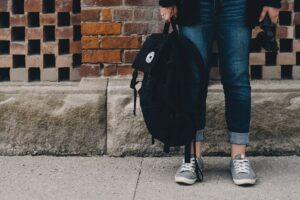
We are a reader-supported education publication. When you buy through links on our site, we may earn an affiliate commission to help us keep providing content.
As the 2021-22 school year approaches, you might have many questions. What will your home district decide to do? What will the best arrangement look like for your child?
Much remains uncertain until today, but districts continue to make reopening plans. Will we return to in-person teaching last year? Here’s what we know so far.
Online, Hybrid or In-Person Classes?
This past January, approximately half of all districts returned to in-person learning. As of right now, many communities plan to reopen for in-person learning in the fall. However, that doesn’t mean they will return to business as usual.
Many districts will continue to offer hybrid options for those learners who don’t want to return to crowded classrooms. Public school districts must by law offer distance learning options to students based on their unique circumstances, including medically fragile individuals with a high risk of severe complications from COVID-19. Therefore, if you get the back-to-school mailer indicating in-person fall learning, contact the district office immediately to discuss your options.
Private schools generally have more leeway to set independent rules. However, that doesn’t mean you’re in the clear and need not worry about daycare if Delta or another variant causes widespread shutdowns again. State and federal government mandates supersede institutional rules, and you may have to once more quarantine your kids during a severe outbreak.
What About Mask Guidance in Schools?
The Centers for Disease Control and Prevention (CDC) recently revised their mask guidance yet again, based on the science available to date. While they previously indicated that vaccinated students did not need to wear masks, they have since revised that opinion. They now call for universal mask usage for all students, staff, teachers and visitors to K-12 schools.
The CDC likewise recommends that facilities keep three feet, not the previous six, between students for physical distancing. They should encourage staff and students alike to stay home if they exhibit any symptoms.
The problem is that the CDC can only offer guidance, not enforce local rules. Parents and teachers must still contend with students who refuse to wear masks on an individual basis.
Schools should likewise encourage vaccination. While they work well, there’s now evidence that some people with breakthrough infections go on to develop long-hauler symptoms, a severe problem in a nation without universal health care. Such ongoing conditions can devastate a family’s finances.
What’s even more concerning is some evidence of unvaccinated people catching breakthrough infections from those who are vaccinated but remain asymptomatic. Children under 12 are not yet eligible for the COVID-19 vaccine, meaning they remain at risk of severe complications. While most children don’t suffer serious symptoms requiring hospitalization like adults, some do.
Therefore, parents should encourage mask use — but it might not be sufficient to ease their minds. Each family must determine what’s best for them.
When Can Children Get the Vaccine?
Children over the age of 12 are eligible for the vaccine. Unless your child has a health condition that contraindicates getting a jab, they should do so before returning to in-person learning. Currently, only just over a quarter of eligible children fall into the fully vaccinated category.
Children age four and up will likely become eligible for the vaccine by the end of 2021, according to Dr. Anthony Fauci. At worst, they may have to wait until the spring semester.
Testing in infants and toddlers takes longer. Parents must decide for themselves whether or not a return to in-person learning puts any younger family members at risk. While it’s unlikely that a young child could contract a severe case of COVID-19. Babies under one year of age run an elevated risk of severe complications from infection, as do others in the household with autoimmune disorders.
What Could Happen to Complicate the Fall
Even if you decide that a return to in-person learning would benefit your child, intervening events might make telecommuting once more a reality. While it’s unlikely that government officials determined to reopen and get back to business will force future shutdowns, it remains a possibility.
Therefore, parents who work should make Plan B arrangements in case something happens. Speak with your employer now if you might need to maintain a full or partial telecommuting schedule due to your childcare responsibilities. If you don’t have the option to continue working from home, investigate daycare options to keep your children safe.
Will We Return to In-Person Teaching Next Year? Much Remains Uncertain
As of this writing, the majority of districts plan a return to in-person learning in the fall. However, much could still happen, and parents must still determine the best educational arrangement for their children.









